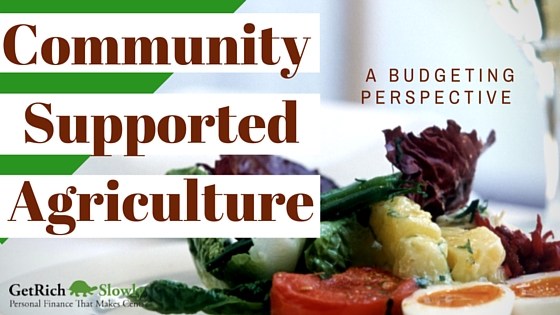Community supported agriculture and tour budget: Is it worth it?
We joined a CSA this year, our first time venturing into the realm of Community Supported Agriculture. I have been intrigued with the concept for several years, as I have friends who rave about their weekly boxes of fresh veggies from a local farm. A special deal popped up in my Facebook feed in late winter and I decided to do it.
We shelled out $475 ($450 for the CSA and $25 one-time delivery fee). The reason I finally took the plunge is because the CSA was coming from a farm in Salem, Connecticut, (about 30 miles from my home) but was being delivered to a farm in our town (about a 7 minute drive up the road). So the convenience factor weighed heavily in the decision.
The $450 applies to a season that started the last week in May and will run through November. That's 25 weeks, equaling an expense of $18 a week. The box of vegetables provides about 5-10 lbs of produce a week. From May through October we typically shop for veggies and fruits at our local farmers' markets (we are blessed with several near our home), where we easily spend around $40 a week. The CSA does not include fruit.
So, $18 a week for vegetables that are grown 30 miles from my home. The farm we use is not certified organic but they are a member of CTNOFA (Northeast Organic Farming Association) and they use all-natural practices. They are not certified organic because the process is cumbersome and costly for small farms that live in the edge of their finances at all times.
After picking up our box this week, I browsed PeaPod — a local grocery delivery service — to see how much the same veggies, grown who-knows-where-in-who-knows-what, would cost me. The bill came to $23.27. #winning
Pros of Joining a CSA
For me, the pros of this CSA are many:
We are meeting vegetables we have never met before, including garlic scapes, kohlrabi, chard, bok choi, and Chinese cabbage. The farm sends an email on Monday (in advance of Wednesday delivery) outlining what they expect to have, providing a link to information on each vegetable, and a suggested recipe that takes into account a lot of what's in the box.
We are expanding our culinary horizons — when I get the email, first I investigate veggies I don't know (kohlrabi! It looks like a spaceship and tastes like a sweet radish) and then I Google recipes for them. I have made some fantastic dishes with chard, bok choy, and Chinese cabbage.
Our daughter is in heaven. She Who Wishes to be Vegan is so happy to be loca-voring.
Related >> Household Budgets for Beginners: Simple Tips for Success
We are helping to support local farmers — in this case not just one, but two. Because when we go to the farm to pick up the box of veggies, we often will buy eggs or meat from that farm as well.
Supporting local farms is important.
I love their weekly email. It's like reading a Steinbeck novel. The farm is owned by a husband and wife and over the winter they had their first baby, who came 14 weeks early! So in addition to the rigors of farming, they have the rigors of new parenting and the rigors of a preemie baby. Can you even imagine?
Cons of CSAs
There are three weeks in the summer that I knew we would not be around to enjoy the vegetables. I made arrangements with a nearby soup kitchen to have them pick up my share and use it for their clients. And if there are folks who miss their pick up, the farm donates those veggies to another soup kitchen.
Sometimes it is a challenge to get it all eaten. In the spring, there was SO MUCH LETTUCE. One week there were four different bags full of different lettuces. Now, we love salad, but honestly. That much roughage is rough. I started giving some of it to my friends, for which they were grateful.
I anticipate that if the spring was all about lettuce, the fall will be all about squash. The good news is with those, I can store them in a dark corner of the pantry and they can last through the winter. How Little House on the Prairie of me!
The CSA movement is definitely growing. Farmers like it because it gives them an influx of cash up front at the start of the season. According to LocalHarvest.org, CSAs first appeared about 25 years ago, and have grown in popularity since. Of the 2 million farms in the US, 80 percent are small farms, and of those, the majority are family-owned. Data collected in 2012 by the U.S. Department of Agriculture indicates that 12,617 farms in the United States reported marketing products through a community supported agriculture (CSA) arrangement. That was the most recent information I could find. The USDA link and LocalHarvest.org can help you find a CSA near you.
How about you? Have you done or are you currently in a CSA? Why or why not? Add your thoughts in the comments!
Become A Money Boss And Join 15,000 Others
Subscribe to the GRS Insider (FREE) and we’ll give you a copy of the Money Boss Manifesto (also FREE)


